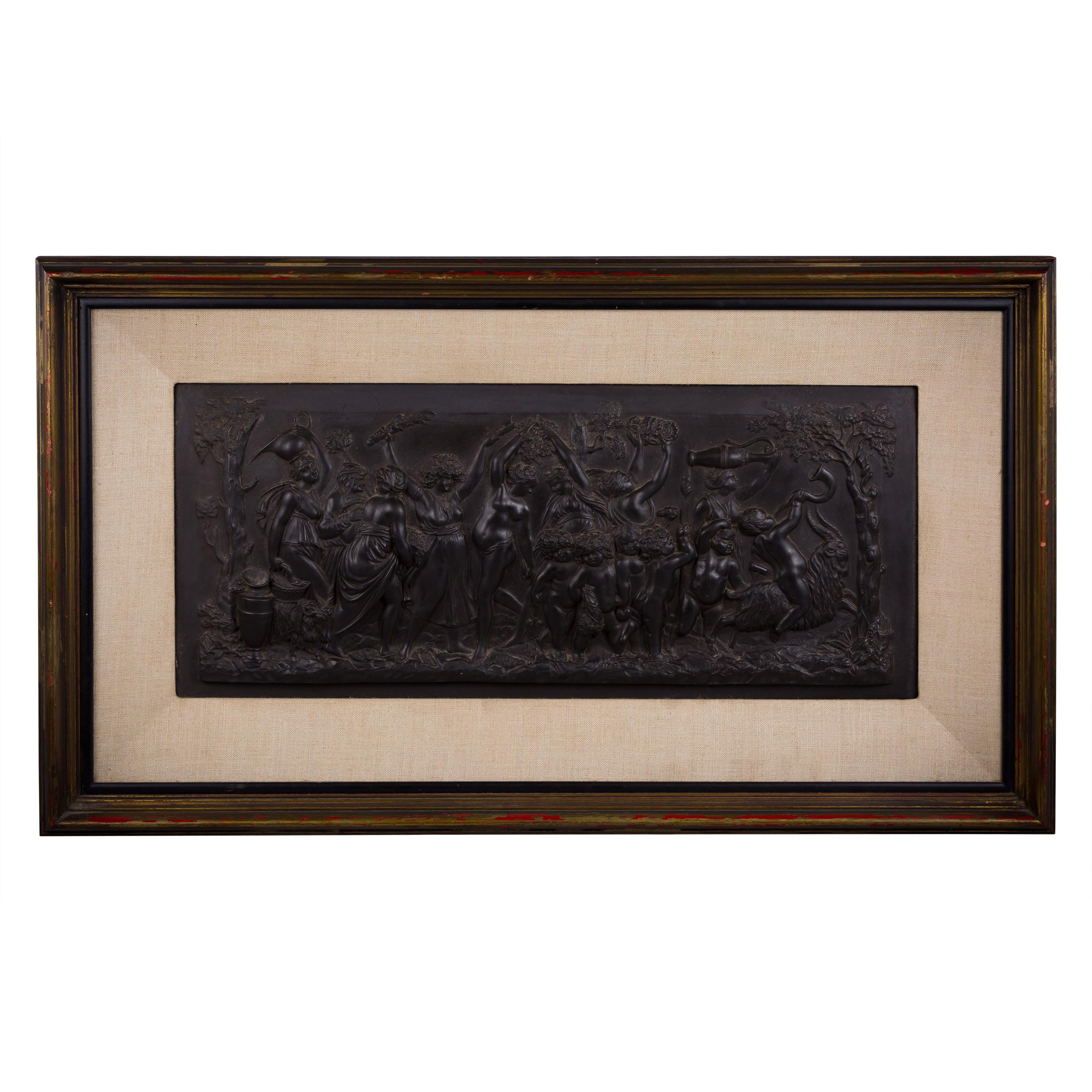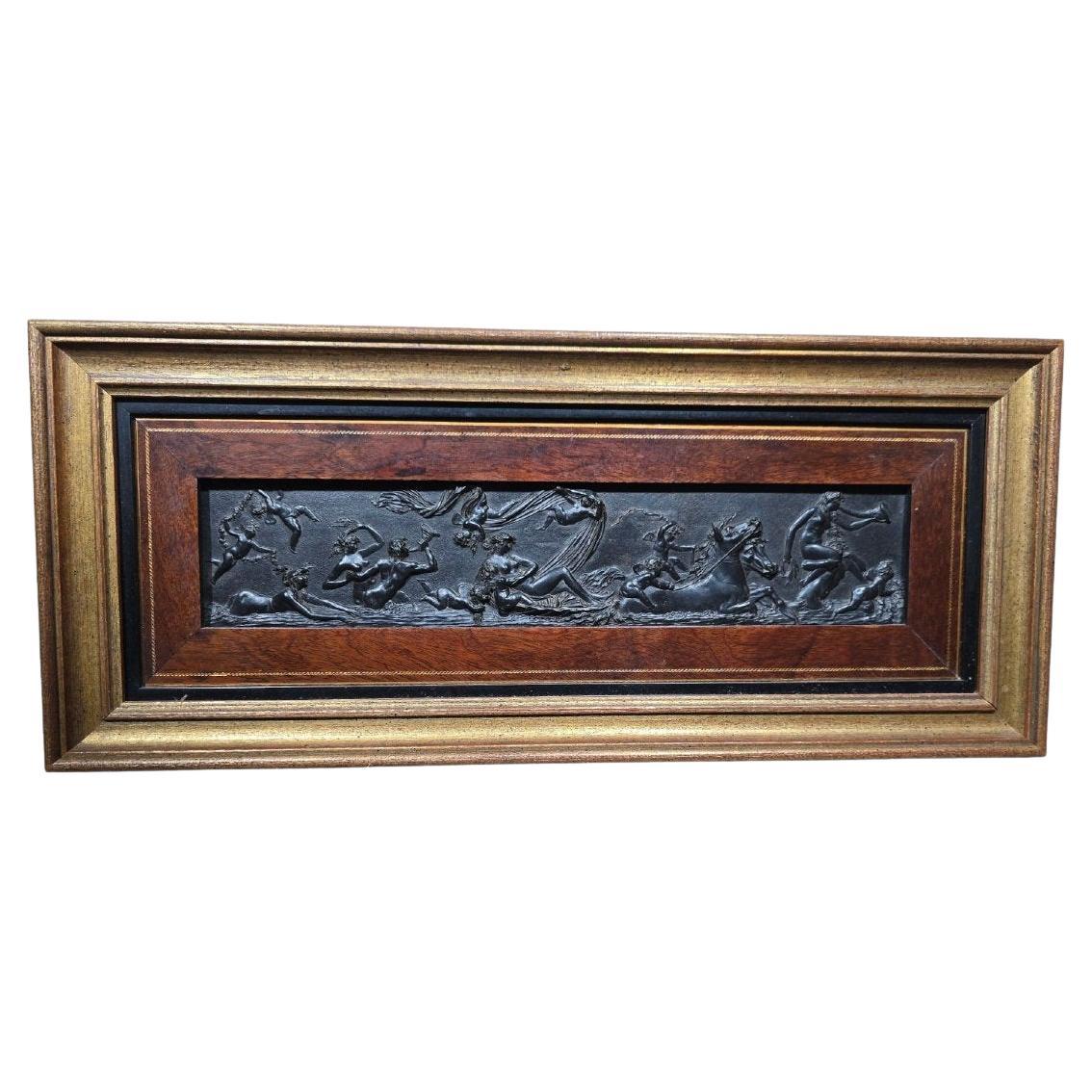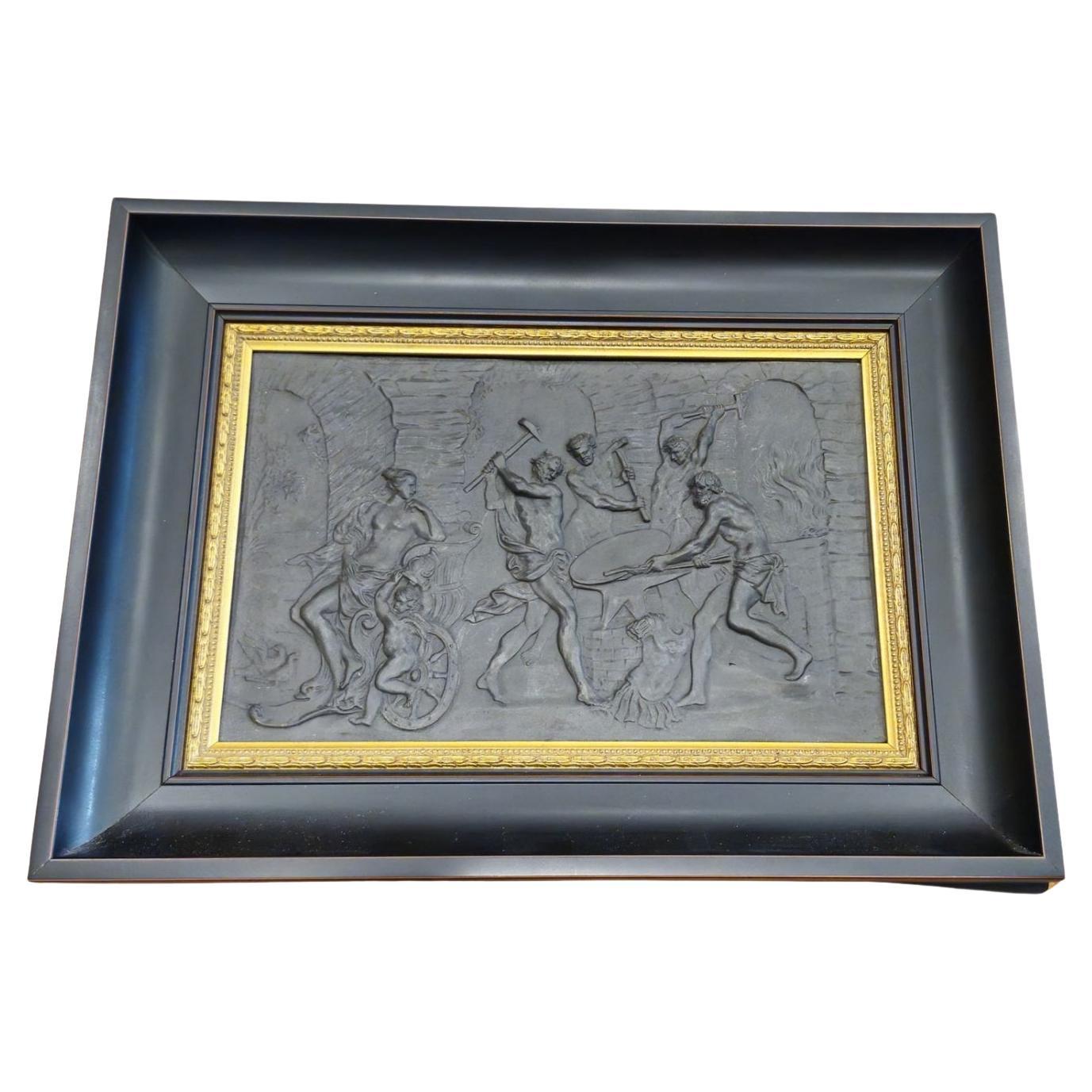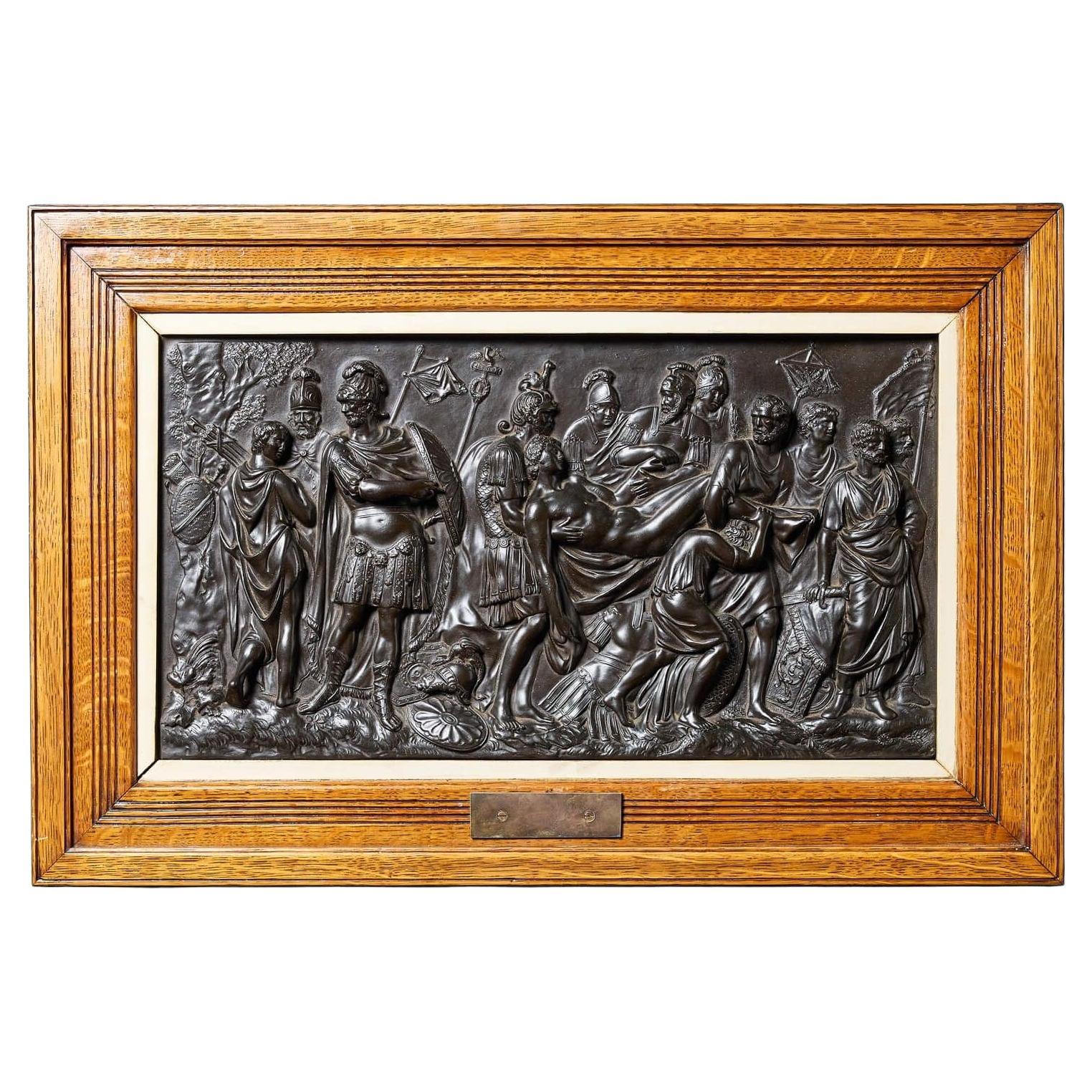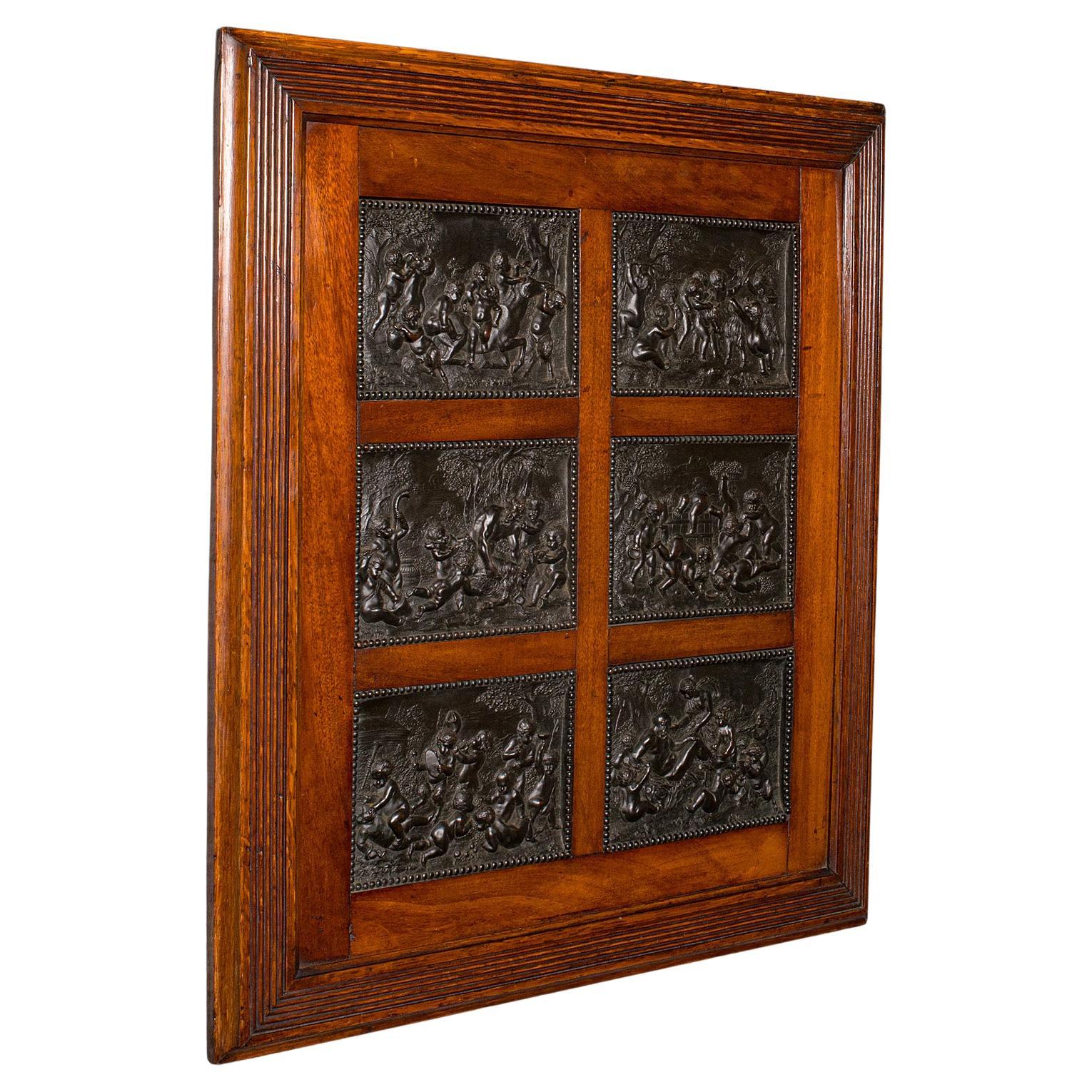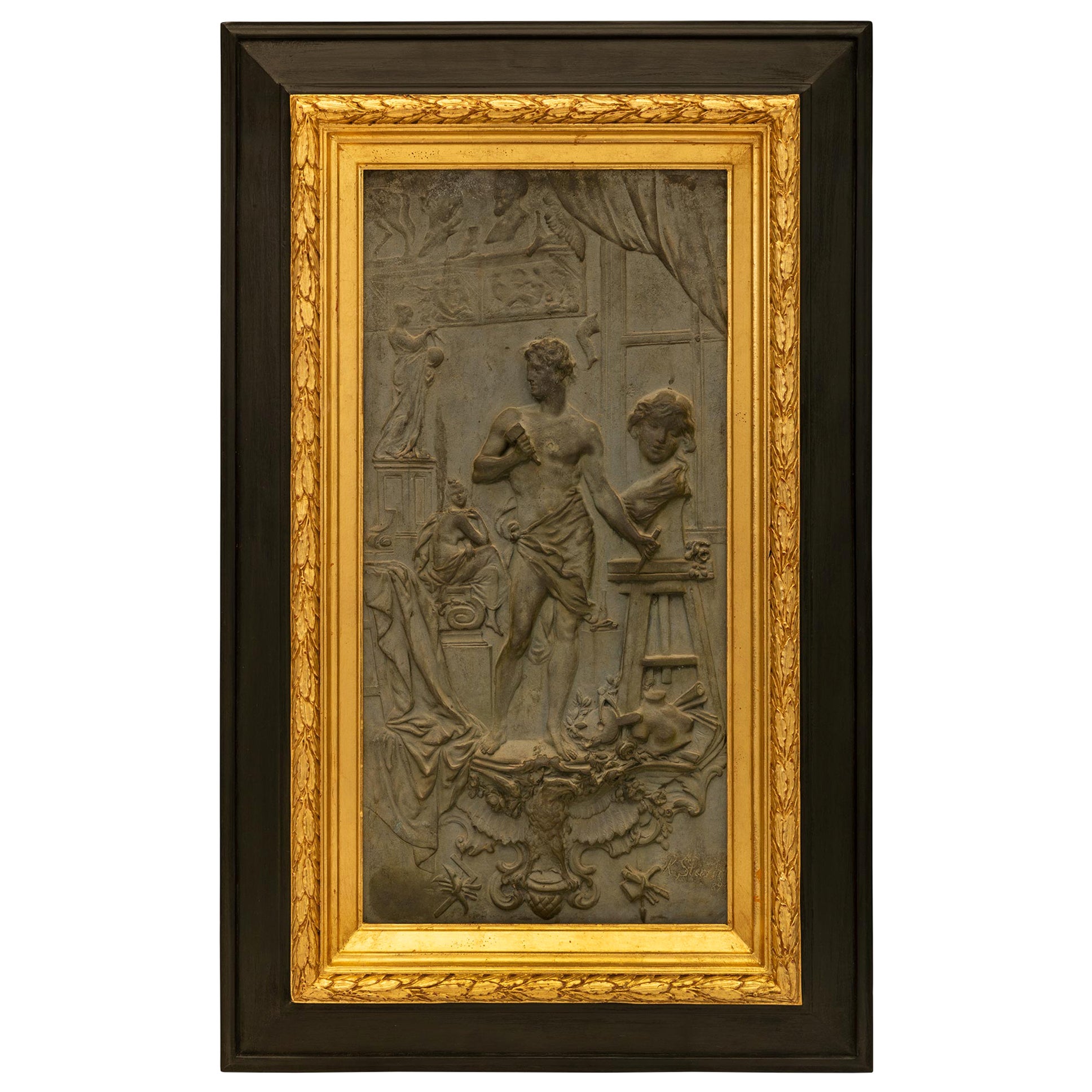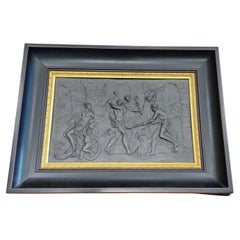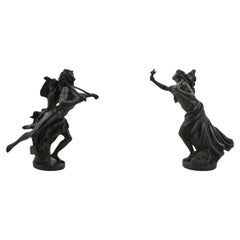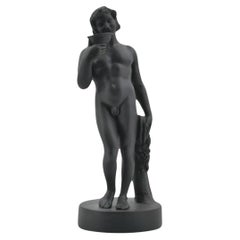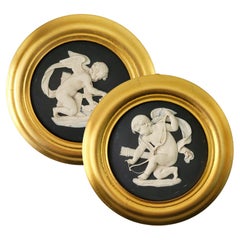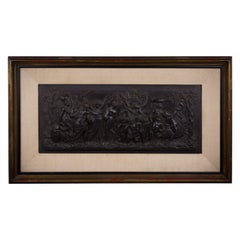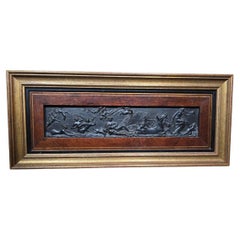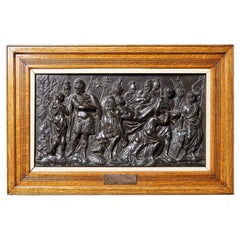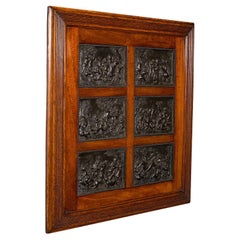Items Similar to Plaque: Bacchanalian Triumph in Black Basalt, Wedgwood C1800
Want more images or videos?
Request additional images or videos from the seller
1 of 7
Plaque: Bacchanalian Triumph in Black Basalt, Wedgwood C1800
$12,000
£9,048.05
€10,426.62
CA$16,647.24
A$18,653.15
CHF 9,709.67
MX$228,192.57
NOK 123,246.33
SEK 116,404.69
DKK 77,836.85
Shipping
Retrieving quote...The 1stDibs Promise:
Authenticity Guarantee,
Money-Back Guarantee,
24-Hour Cancellation
About the Item
One of the major tablets produced by Wedgwood, this is "Sacrifice", from the pair "Bacchanalian Triumph", after the original by Clodion. These large early tablets are scarce, as they were difficult to make and consequently not many were made.
Sight 51x20cm
Clodion's Bacchanalian Triumph is a famous sculpture created by Claude Michel, known as Clodion, a French sculptor of the 18th century. The sculpture captures a scene of revelry and celebration associated with Bacchus, the Roman god of wine, fertility, and ecstasy.
Clodion's Bacchanalian Triumph features a group of figures engaged in various forms of merriment and intoxication, typical of Bacchanalian rites and festivities. Bacchus, often depicted as the central figure in such scenes, is typically accompanied by nymphs, satyrs, and other mythical creatures.
The sculpture is characterized by its dynamic composition and intricate details, showcasing Clodion's mastery of capturing movement and emotion in his works. The figures are often depicted in dynamic poses, conveying the energy and excitement of the Bacchanalian revelry.
Clodion's Bacchanalian Triumph is considered one of the artist's most iconic works and is admired for its depiction of classical themes and its technical excellence. It reflects the popularity of classical mythology and themes of sensuality and hedonism during the late 18th century in European art and culture.
- Attributed to:Wedgwood (Manufacturer)
- Dimensions:Height: 14.18 in (36 cm)Width: 14.18 in (36 cm)Depth: 1.97 in (5 cm)
- Style:Neoclassical (Of the Period)
- Materials and Techniques:Stoneware,Molded
- Place of Origin:
- Period:
- Date of Manufacture:circa 1800
- Condition:Repaired: The plaque was cleanly broken in two, but has been expertly and invisibly restored.
- Seller Location:Melbourne, AU
- Reference Number:Seller: 14781stDibs: LU3151338504902
About the Seller
5.0
Vetted Professional Seller
Every seller passes strict standards for authenticity and reliability
Established in 2005
1stDibs seller since 2017
79 sales on 1stDibs
Typical response time: <1 hour
- ShippingRetrieving quote...Shipping from: Melbourne, Australia
- Return Policy
Authenticity Guarantee
In the unlikely event there’s an issue with an item’s authenticity, contact us within 1 year for a full refund. DetailsMoney-Back Guarantee
If your item is not as described, is damaged in transit, or does not arrive, contact us within 7 days for a full refund. Details24-Hour Cancellation
You have a 24-hour grace period in which to reconsider your purchase, with no questions asked.Vetted Professional Sellers
Our world-class sellers must adhere to strict standards for service and quality, maintaining the integrity of our listings.Price-Match Guarantee
If you find that a seller listed the same item for a lower price elsewhere, we’ll match it.Trusted Global Delivery
Our best-in-class carrier network provides specialized shipping options worldwide, including custom delivery.More From This Seller
View AllPlaque: Vulcan's Forge, Wedgwood C1860
By Wedgwood
Located in Melbourne, Victoria
Showing Venus and Cupid at the forge, while Vulcan forges armour for her other son, Aeneas.
In Roman mythology, the story of Vulcan forging armor for Aeneas is a significant episode...
Category
Antique Mid-19th Century English Neoclassical Decorative Art
Materials
Stoneware
Pair of Bacchantes in Black Basalt. Wedgwood C1860.
By Wedgwood
Located in Melbourne, Victoria
Perhaps the most complex work in black basalt undertaken on any scale by Wedgwood, the Bacchantes, are adapted from sculptures by Clodion. A large and impressive pair, ful of vigour ...
Category
Antique Mid-19th Century English Neoclassical Pottery
Materials
Stoneware
Black basalt figure of Bacchus. Wedgwood C1780.
By Wedgwood
Located in Melbourne, Victoria
Exceptionally rare early figure of Bacchus in black basalt. The mixed-case mark places this figure between 1780 and 1785.
He is portrayed in typical style, his head garlanded with grapes and with a wine cup to his lips.
Bacchus, also known as Dionysus in Greek mythology, is the enigmatic god of wine, fertility, and ritual madness. He symbolizes freedom, ecstasy, and the blurring of societal norms through his rituals and festivities. Bacchus is often depicted in myths as a deity who challenges the status quo, promoting an atmosphere where conventional rules do not apply, and his followers are liberated from their everyday constraints.
Born from Zeus and the mortal Semele, Bacchus is unique among gods, bridging the divide between the divine and the human. His followers included the wild and ecstatic maenads, female devotees who often reached states of divine frenzy, and the satyrs, mischievous half-man, half-goat beings. The worship of Bacchus was marked by theatrical processions, dances, and plays, reflecting his patronage of the theater and the dramatic arts.
Bacchus’s mythology...
Category
Antique 1780s English Neoclassical Pottery
Materials
Stoneware
Pair of framed Roundels in Black Jasperware, Wedgwood, circa 1920
By Wedgwood
Located in Melbourne, Victoria
An exceptionally fine pair of roundels in black jasperware, decorated with two images of Cupid: The first sharpening his arrows; the second, of him st...
Category
Early 20th Century English Neoclassical Figurative Sculptures
Materials
Stoneware
Trophy Plate, Wedgwood, circa 1880
By Wedgwood
Located in Melbourne, Victoria
Trophy plates were a particularly Victorian development at Wedgwood, taking the use of classical ornament to its absolute limit. Over 2,000 individual sprigs were made, applied, and ...
Category
Antique Late 19th Century English Neoclassical Revival Pottery
Materials
Stoneware
Figure Faun with Flute, Wedgwood, circa 1870
By Wedgwood
Located in Melbourne, Victoria
After the antique “Piping Faun” now in the Louvre Museum; the result of it being bought by Napoleon from the Borghese collection.
The "Piping Faun" is...
Category
Antique 1870s English Neoclassical Pottery
Materials
Stoneware
You May Also Like
Wedgwood Black Basalt Rectangular Plaque of 'Bacchanalian Triumph', 19th Century
Located in New York, NY
Modeled in relief with a procession of drunken maidens and putti, mounted in a modern wood frame, impressed WEDGWOOD twice. Size of plaque 9 x 20.5 inches.
Category
Antique 19th Century British Decorative Art
Materials
Ceramic
Wedgwood Basalt Plaque — Mythological Scene, Circa 1800 Rare Black Basalt Relief
Located in Madrid, ES
Rare Wedgwood Black Basalt Plaque — Mythological Scene, Circa 1800
An exceptional and rare large-format Wedgwood black basalt plaque from around 1800. This finely executed relief de...
Category
Antique Early 19th Century European Greco Roman Wall-mounted Sculptures
Materials
Stoneware
Framed Wedgwood Black Basalt Plaque ‘The Death of Meleager’
By Wedgwood
Located in Wormelow, Herefordshire
A late 18th / early 19th century framed Wedgwood black basalt plaque depicting ‘The Death of Meleager’ also known as ‘The Death of a Roman Warrior’. Impressed with maker’s mark to plaque reverse.
Wedgwood first began creating black basalt wares in 1768. This dense and fine-grained stoneware was designed to imitate old bronze statues and remains to this day synonymous with fine quality.
This plaque appears in the company’s 1773 catalogue. While the design continued to be made into the 19th century, this Wedgwood plaque was infrequently attempted due to firing challenges made difficult by the plaque’s elaborate detail and scale.
This antique black basalt...
Category
Antique Early 19th Century English Neoclassical Wall-mounted Sculptures
Materials
Stone
Antique Bacchanalian Frieze, Italian, Bronze, Grand Tour, Victorian, circa 1850
Located in Hele, Devon, GB
This is an antique framed Bacchanalian Frieze. An Italian, mahogany and bronze Grand Tour relief mount after François Duquesnoy (1594-1646), dating ...
Category
Antique Mid-19th Century Italian Neoclassical Decorative Art
Materials
Bronze
Austrian 19th Century Patinated Bronze, Giltwood and Ebony Wall Plaque
Located in West Palm Beach, FL
An exceptional and most decorative Austrian 19th century patinated bronze, giltwood and Ebony wall plaque signed K. Sterrer. The striking wall decor is centered by the wonderfully executed patinated bronze plaque depicting a handsome sculptor in his atelier draped in a flowing garment working on a bust of a woman resting on a stool while holding his hammer and chisel. He is standing on a wall bracket like element with an impressive open winged eagle above an acorn finial, a tied carpenter's square and a tied bell hammer with a caliper and fine foliate branches at his feet. In the background is a beautiful maiden also draped in a wonderful flowing garment siting with her legs crossed on the plinth of a capital where another maiden, possibly a statue, is standing with a globe and sextant in her hand with plaques, busts, wings and curtains above. The plaque is set within an elegant mottled giltwood frame with beautiful richly carved wrap around berried laurel bands with a fine angled ebonized Fruitwood border. All original gilt and patina throughout.
Karl Sterrer...
Category
Antique 19th Century Austrian Decorative Art
Materials
Bronze
Neoclassical Style 20th Century Plaster Wall Plaque
Located in Wormelow, Herefordshire
A reclaimed neoclassical plaster wall plaque with a stunning painted matte black frame.
In a large landscape form, this handcrafted plaque is decorated in relief depicting a romantic scene of cherubs or putti accompanied by a dog while they gather around a fire in an enchanted woodland...
Category
Mid-20th Century English Neoclassical Decorative Art
Materials
Plaster, Wood
More Ways To Browse
Basalt Sculpture Of Wedgwood
The Triumph Of Bacchus
Osborne Gold China
Pat Mayhew
Peter Tybjerg
Pierre Dorian
Reese James
Richard Schoenbeck On Sale
Roger Vivier Collage
Ron Hitchens
Ronald Renmark
Sigi Pineda Plaque
Studio Desimonewayland
Tian Tsui
Ugolini Florence Mosaic
Vincent Perez
Vintage Eagles Band Shirt
Vintage Macrame Owl Wall Hanging
